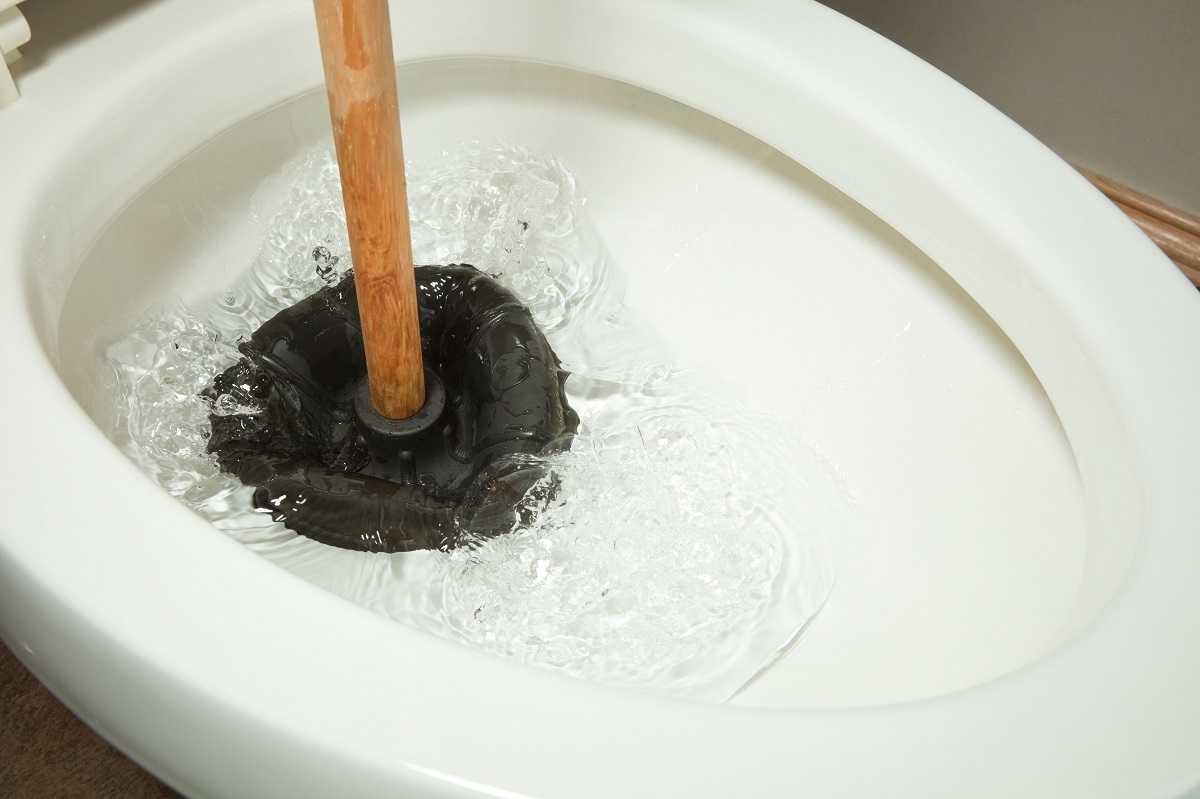Dealing with a clogged toilet, especially when it’s loaded with, well, less-than-pleasant contents, can be a distressing and embarrassing experience. However, fear not, as there are effective methods to unclog a toilet without using a plunger. In this comprehensive guide, we’ll explore various techniques and provide detailed, step-by-step instructions to help you tackle the challenge with confidence and regain control of your bathroom.
Assessing the Severity of the Clog:
Before attempting any unclogging methods, it’s crucial to assess the severity of the blockage. Is the toilet overflowing? Is the water draining slowly? Understanding the extent of the clog will help you choose the most appropriate solution.
If the water is close to overflowing, consider removing excess water with a bucket to prevent a mess during the unclogging process.
Hot Water and Dish Soap Method:
One of the simplest and effective methods involves using a combination of hot water and dish soap. Start by squirting a generous amount of dish soap into the toilet bowl, making sure it reaches the bottom.
Follow this by pouring hot water (not boiling) into the bowl from waist height to create additional force. Allow the mixture to sit for a few minutes before flushing to see if the clog has cleared.
Baking Soda and Vinegar Magic:
Create a fizzy mixture by combining equal parts baking soda and vinegar in the toilet bowl. The chemical reaction can help break down the clog.
After letting it sit for about 10-15 minutes, flush the toilet to see if the clog has cleared. This method is particularly effective for organic material and can help neutralize unpleasant odors.
The Wire Hanger Technique:
For a more hands-on approach, a wire hanger can be straightened and used to break up the clog. Be cautious not to scratch the porcelain. Insert the hanger and maneuver it to break apart the blockage.
Follow up with a flush to check if the clog has been successfully cleared. Alternatively, consider using a plastic drain snake for a safer option.
Plumbing Auger or Snake:
If the clog persists, consider using a plumbing auger or snake. Insert the tool into the toilet drain and turn the handle to break up and pull out the obstruction.
This method is effective for more stubborn clogs and ensures that the blockage is thoroughly cleared. Follow up with a few flushes to ensure the toilet is fully functional.
Enzyme-Based Drain Cleaner:
Enzyme-based drain cleaners are designed to break down organic matter, making them effective for toilet clogs. Follow the product instructions, and be patient as it works to dissolve the blockage.
Flush the toilet after the recommended waiting time to see if the clog has been successfully removed.
Boiling Water Technique:
Boiling water can be poured directly into the toilet bowl to help break down the clog. Be cautious not to damage the porcelain by using water that is too hot. Pour the boiling water from a height to increase its force.
Wait for 10-15 minutes before flushing to allow the hot water to work on breaking down the clog.
Preventing Future Clogs:
Once you’ve successfully unclogged the toilet, take steps to prevent future occurrences. Consider adopting habits like using less toilet paper, disposing of hygiene products properly, and regularly performing preventive maintenance.
Regularly flushing your toilet with hot water can help prevent the buildup of organic matter and keep your plumbing system in good condition.
FAQs:
Q1: Can I use bleach to unclog a toilet?
A: While bleach can help sanitize and deodorize, it’s not the best choice for unclogging. Stick to methods like hot water, dish soap, or baking soda and vinegar for effective results. Bleach may not be as effective in breaking down clogs.
Q2: How long should I wait after using a method before flushing?
A: Wait at least 10-15 minutes to allow the chosen method to work before flushing. Patience is key to ensuring the solution has time to break down the clog. If the clog persists, you may need to repeat the process or try a different method.
Q3: Is it safe to use a wire hanger in the toilet?
A: Yes, but exercise caution to avoid scratching the porcelain. A plastic drain snake is also a safe alternative that won’t damage the toilet bowl. Follow the instructions carefully to ensure safe and effective use.
Q4: What if none of the methods work?
A: If all else fails, it’s time to call a professional plumber. Persistent clogs may indicate a more significant plumbing issue that requires expert attention. A plumber can assess the situation, identify any underlying problems, and provide a thorough solution.
Conclusion:
Unclogging a toilet with poop in it without a plunger may seem like a daunting task, but with the right techniques and a bit of patience, you can tackle the issue successfully. Remember to assess the severity of the clog, choose an appropriate method, and take preventive measures to avoid future plumbing woes. If all else fails, don’t hesitate to seek the help of a professional plumber to ensure a thorough resolution and maintain the integrity of your plumbing system.

A group of home improvement enthusiasts and bathroom design experts, combines in-depth knowledge and a shared passion to deliver engaging, informative content that guides readers through the world of bathroom innovation and style.

Leave a Reply